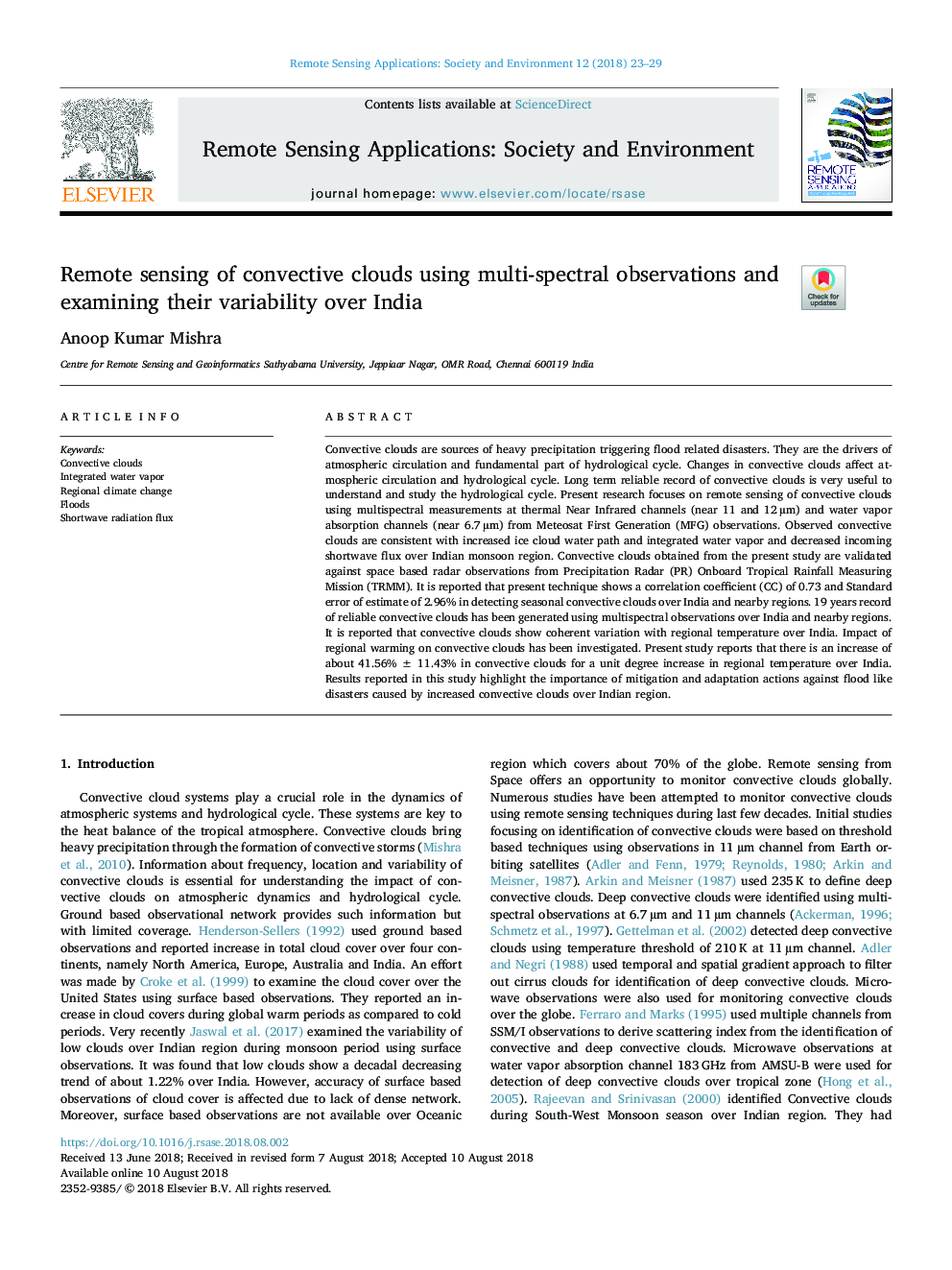| Article ID | Journal | Published Year | Pages | File Type |
|---|---|---|---|---|
| 8866287 | Remote Sensing Applications: Society and Environment | 2018 | 7 Pages |
Abstract
Convective clouds are sources of heavy precipitation triggering flood related disasters. They are the drivers of atmospheric circulation and fundamental part of hydrological cycle. Changes in convective clouds affect atmospheric circulation and hydrological cycle. Long term reliable record of convective clouds is very useful to understand and study the hydrological cycle. Present research focuses on remote sensing of convective clouds using multispectral measurements at thermal Near Infrared channels (near 11 and 12â¯Âµm) and water vapor absorption channels (near 6.7â¯Âµm) from Meteosat First Generation (MFG) observations. Observed convective clouds are consistent with increased ice cloud water path and integrated water vapor and decreased incoming shortwave flux over Indian monsoon region. Convective clouds obtained from the present study are validated against space based radar observations from Precipitation Radar (PR) Onboard Tropical Rainfall Measuring Mission (TRMM). It is reported that present technique shows a correlation coefficient (CC) of 0.73 and Standard error of estimate of 2.96% in detecting seasonal convective clouds over India and nearby regions. 19 years record of reliable convective clouds has been generated using multispectral observations over India and nearby regions. It is reported that convective clouds show coherent variation with regional temperature over India. Impact of regional warming on convective clouds has been investigated. Present study reports that there is an increase of about 41.56%â¯Â±â¯11.43% in convective clouds for a unit degree increase in regional temperature over India. Results reported in this study highlight the importance of mitigation and adaptation actions against flood like disasters caused by increased convective clouds over Indian region.
Related Topics
Physical Sciences and Engineering
Earth and Planetary Sciences
Computers in Earth Sciences
Authors
Anoop Kumar Mishra,
